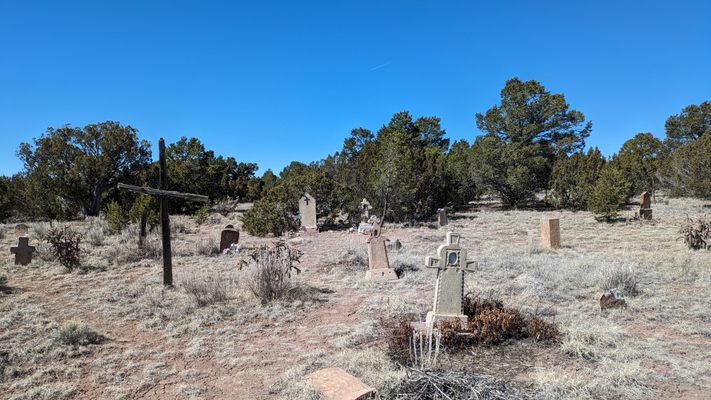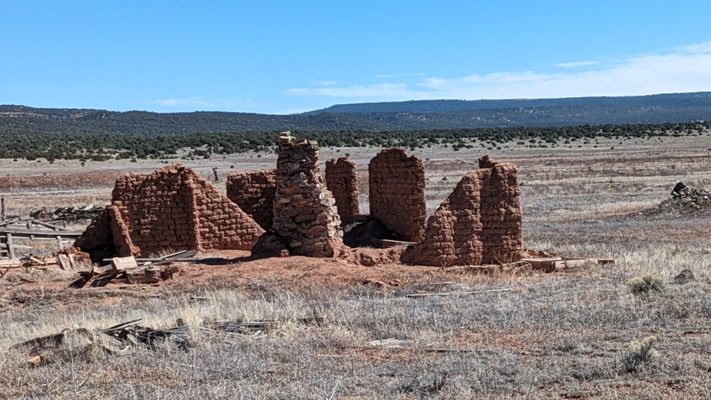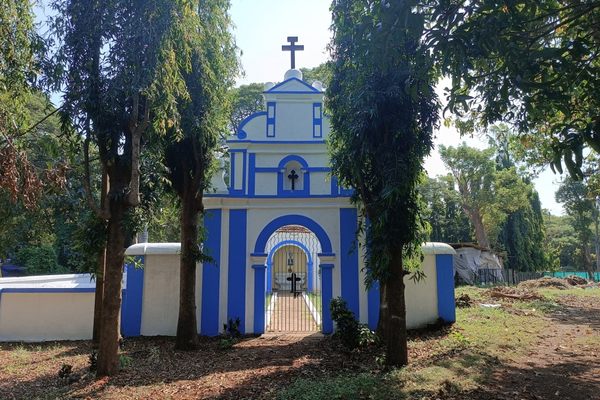About
Eleven miles down a road that is old but still in good condition, visitors will find an old water station known as Ojo de la Vaca. The name means “Cow’s Spring” in Spanish. Surrounded by ranches, this spring was used by cattlemen for decades, but it has sat vacant for quite some time. A number of collapsing stone, wood, and steel structures line the road, protected by barbed wire fences.
The main feature left of the old water station is its cemetery. Also known as San Miguelito Cemetery, it has graves with death dates ranging from 1886 to 1945. There are only about 40 graves in the cemetery, indicating that the community was never all that large. Some bear names like "Sandoval" and "Lujan," old names that have been in New Mexico since the beginning of Spanish settlement. Many of the headstones have been rendered completely illegible by erosion.
However, there is still some trace of life in the old community. In between the ruins, a few private residences still exist along the road. Even the cemetery shows signs of life. Flowers and rosaries are still placed on the graves, signs that it still welcomes regular visitors. One eroding headstone has been supplemented with a sturdy granite copy, to preserve the name of the interred. While Ojo de la Vaca may seem forgotten, it is clear that someone is still looking after it.
Related Tags
Know Before You Go
There are many ranches in this area of New Mexico, and navigation apps will often tell you to go down a road that is privately owned and locked behind a gate. The ruins are best accessed from the north, along a road stemming from Cañoncito. It is helpfully named “Ojo de la Vaca Road,” also known as County Road 51. Most of the road is smooth but unpaved, so avoid visiting in winter or early spring when it may be snowy or muddy. Don’t jump any fences, as this area is still private property.
Community Contributors
Added By
Published
August 16, 2021
Updated
March 13, 2024































